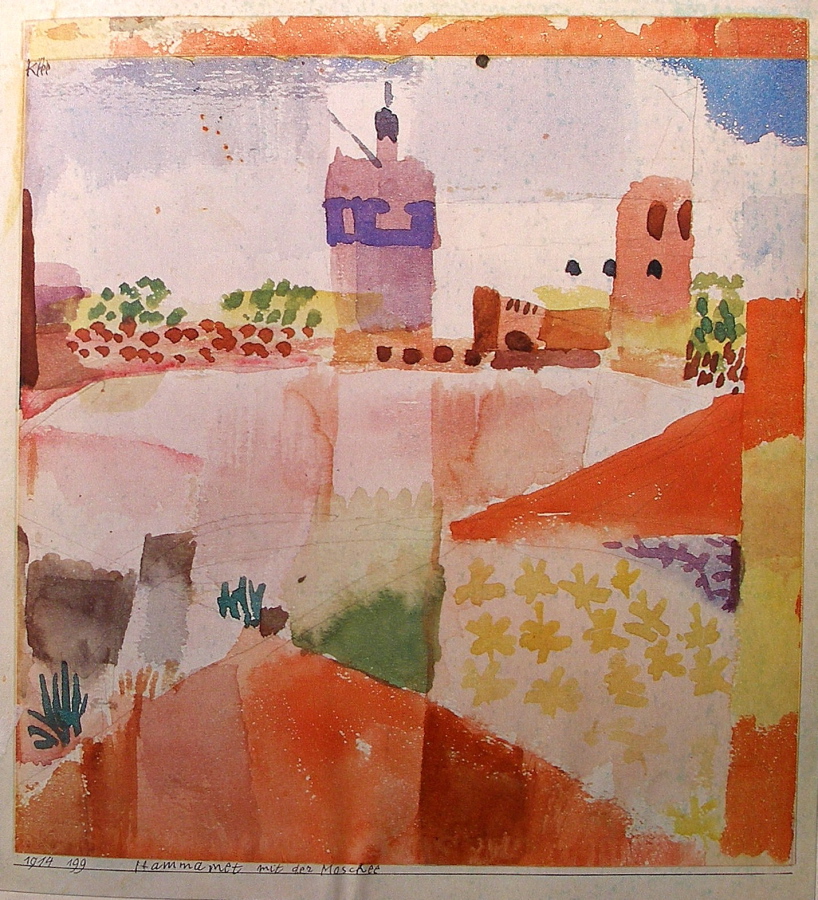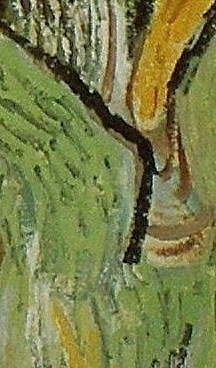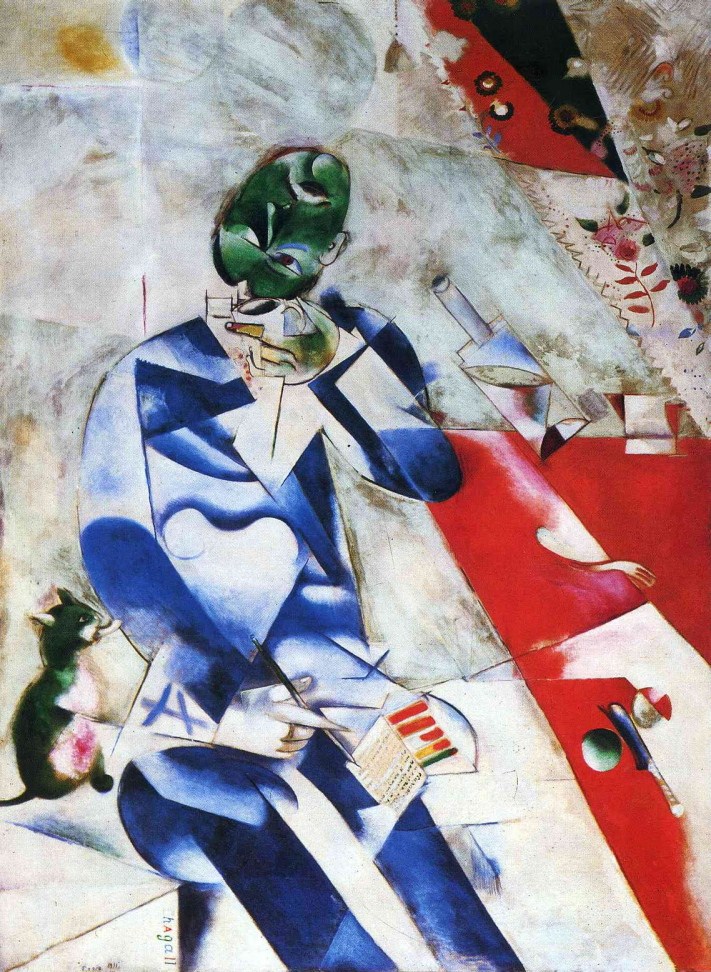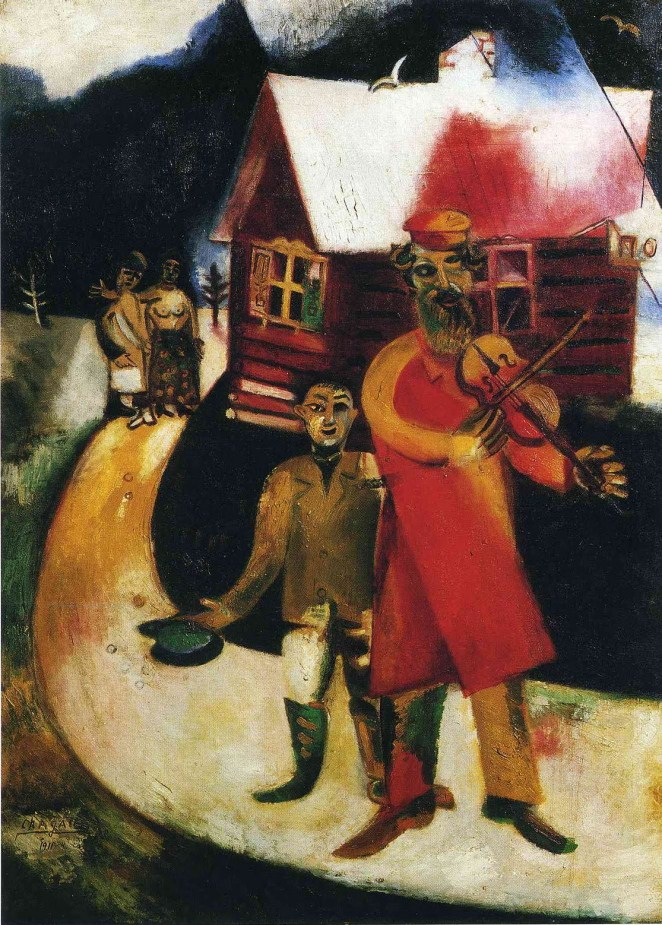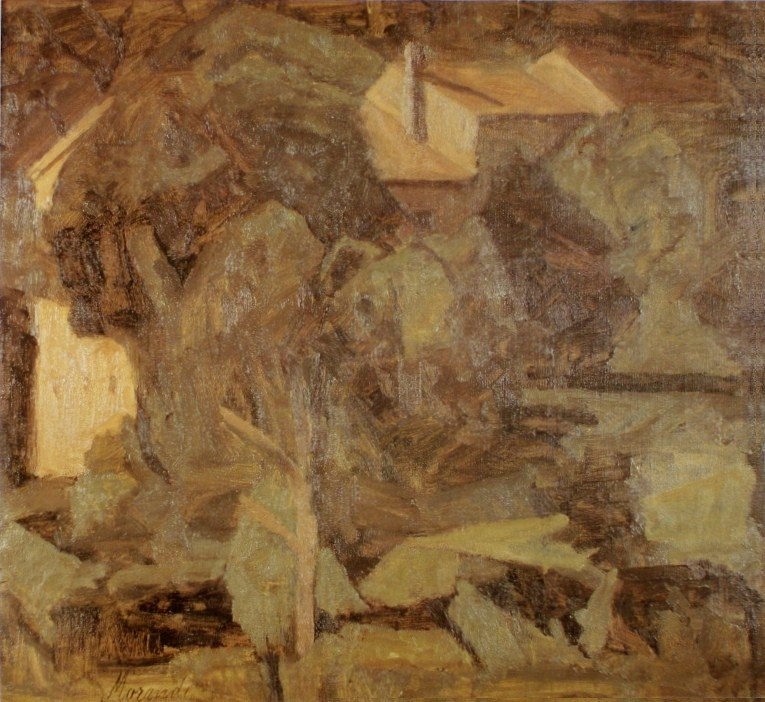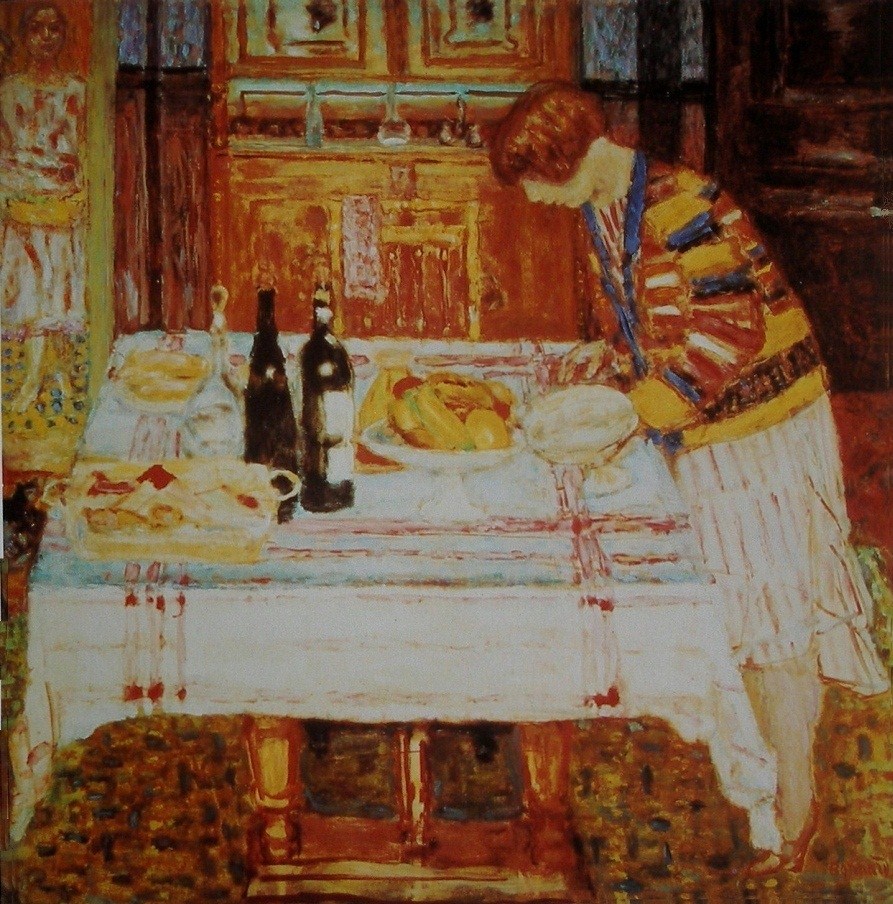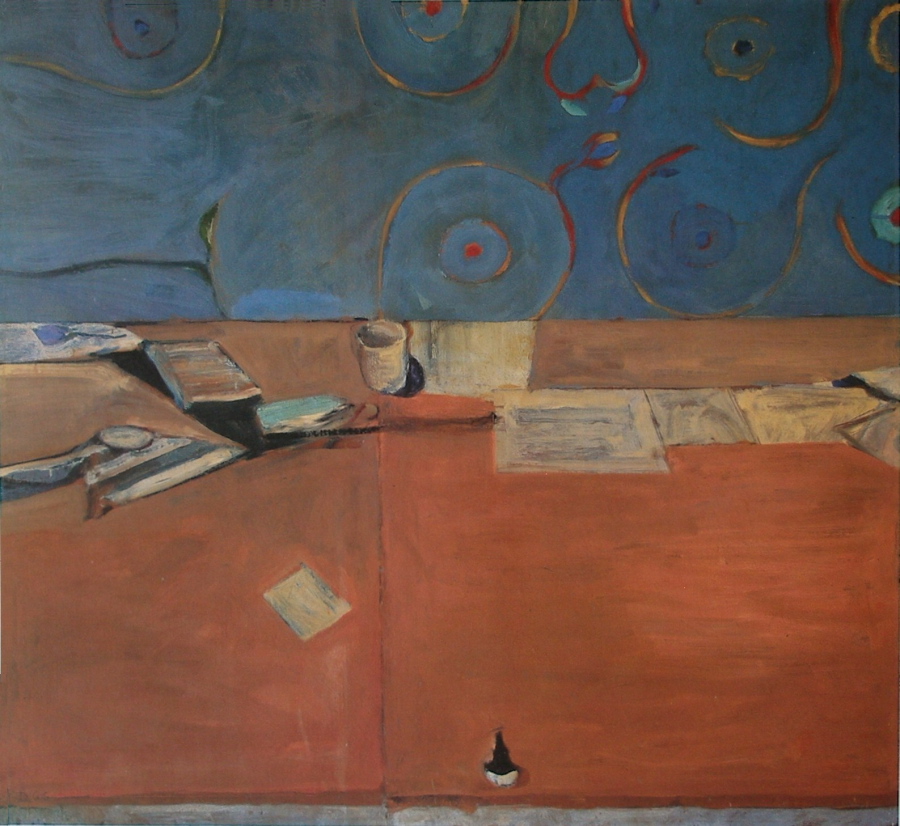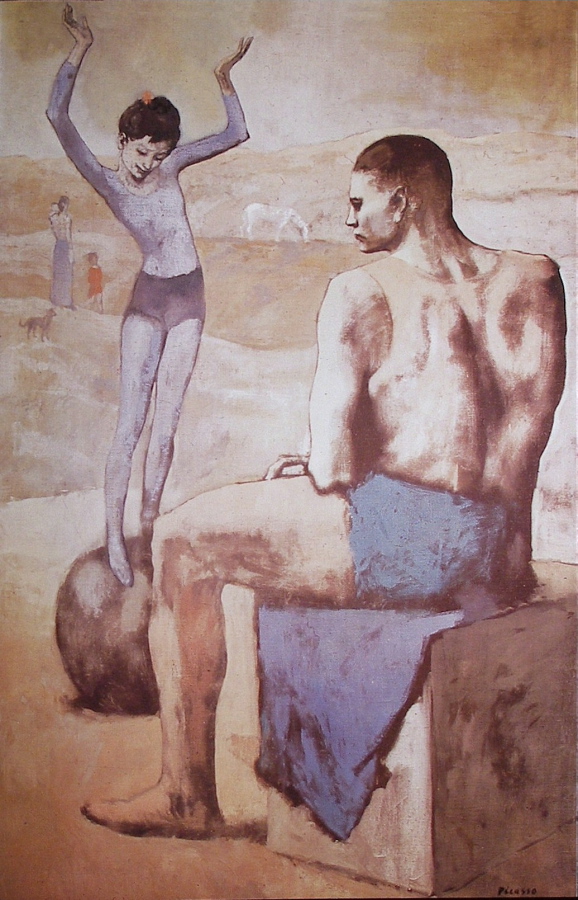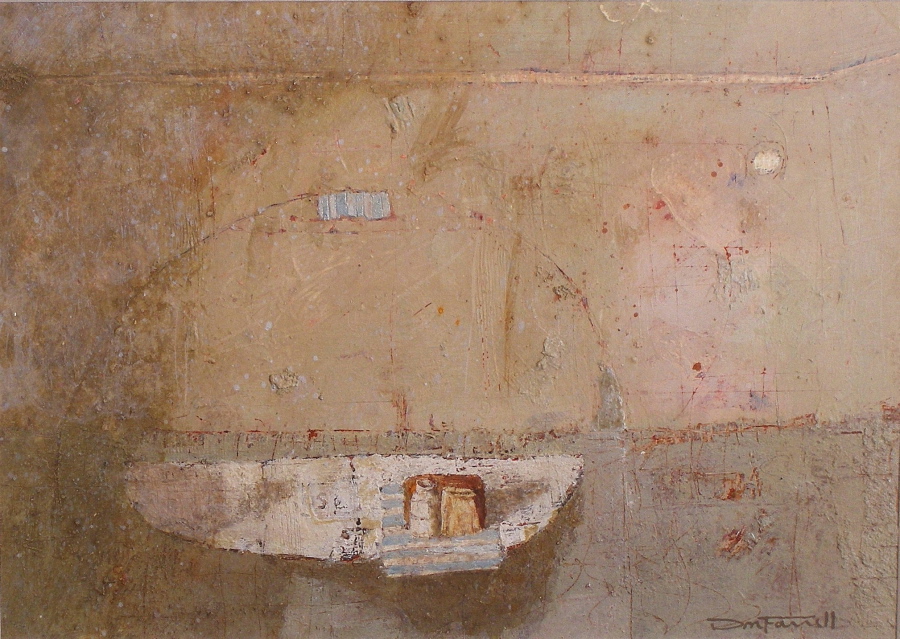
Don Farrell - Box, Bottle and Bag - 1999 - 23 x 32 cm - 9 x 12.5 in - egg tempera on paper
One of my favourite shapes is the oval, which is clearly indicated in this painting.
Let me begin with the shape which may be read as a shelf. In reality the shelf does not exist and in my mind it is a shape, (half an oval). I prefer to work from memory or with my mind.
Now let your eye run along the front of the shelf from left to the right. Your eye movement will connect to that vertical triangle and then to the line which embraces the shelf. I’m very fond of that line. Do you sense the oval?
Do you see the shape created with the line and feel how it gently holds you?
Now there is a need to have you engage with the rest of the composition, and I have used pulls to accomplish this. The small white oval, is the primary pull. The striped rectangle is the other one, which could be considered stronger than the white oval. I eventually came to like the competition, and felt the rectangle supported the the items on the shelf nicely.
There are other markings which I like to call pauses for your eye, and every one is assessed when orchestrating the the composition.
Integration can be accomplished in many ways. Take the horizontal line near the top and how it turns upward at the right. The angle is in harmony (parallel) with the shadows on the shelf. This is very important as parallels provide movement which energize the painting, and they are meant to be sensed rather than seen.
Permit me mention something other than a pull or integration.
There is one other line, which is to the right of the white pull and pointing to where the horizontal line turns up. Feel how it contains your eye movement and how it impacts with the rest of the painting.
I hope you can see that I am composing and not following a formula.
The intuitive coupled with knowledge is the key.

